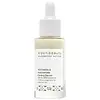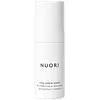What's inside
What's inside
 Key Ingredients
Key Ingredients

 Benefits
Benefits

 Concerns
Concerns

 Ingredients Side-by-side
Ingredients Side-by-side

Water
Skin ConditioningAloe Barbadensis Leaf Juice
Skin ConditioningHelianthus Annuus Seed Oil
EmollientGlycerin
HumectantCapryloyl Glycerin/Sebacic Acid Copolymer
Skin ConditioningNiacinamide
SmoothingUrtica Dioica Extract
AstringentNephelium Lappaceum Leaf Extract
Skin ConditioningSqualane
EmollientSodium Phytate
Sodium Hyaluronate
HumectantSuperoxide Dismutase
AntioxidantLactic Acid
BufferingSodium Levulinate
Skin ConditioningPotassium Sorbate
PreservativeLysolecithin
EmulsifyingSclerotium Gum
Emulsion StabilisingXanthan Gum
EmulsifyingCurcuma Longa Root Oil
PerfumingPullulan
Diheptyl Succinate
EmollientTetrahexyldecyl Ascorbate
AntioxidantTocopherol
AntioxidantSimmondsia Chinensis Seed Oil
EmollientArctostaphylos Uva-Ursi Leaf Extract
Skin ConditioningTaraxacum Officinale Extract
Skin ConditioningVaccinium Uliginosum Berry Extract
Skin ConditioningPrunus Davidiana Extract
AntioxidantSalix Alba Extract
Skin ConditioningBorago Officinalis Extract
EmollientSalvia Officinalis Leaf Extract
CleansingChamomilla Recutita Flower Extract
MaskingArnica Montana Flower Extract
MaskingCalendula Officinalis Flower Extract
MaskingLactobacillus/Punica Granatum Fruit Ferment Extract
Skin ConditioningMaltodextrin
AbsorbentSilica
AbrasiveLeuconostoc/Radish Root Ferment Filtrate
AntimicrobialWater, Aloe Barbadensis Leaf Juice, Helianthus Annuus Seed Oil, Glycerin, Capryloyl Glycerin/Sebacic Acid Copolymer, Niacinamide, Urtica Dioica Extract, Nephelium Lappaceum Leaf Extract, Squalane, Sodium Phytate, Sodium Hyaluronate, Superoxide Dismutase, Lactic Acid, Sodium Levulinate, Potassium Sorbate, Lysolecithin, Sclerotium Gum, Xanthan Gum, Curcuma Longa Root Oil, Pullulan, Diheptyl Succinate, Tetrahexyldecyl Ascorbate, Tocopherol, Simmondsia Chinensis Seed Oil, Arctostaphylos Uva-Ursi Leaf Extract, Taraxacum Officinale Extract, Vaccinium Uliginosum Berry Extract, Prunus Davidiana Extract, Salix Alba Extract, Borago Officinalis Extract, Salvia Officinalis Leaf Extract, Chamomilla Recutita Flower Extract, Arnica Montana Flower Extract, Calendula Officinalis Flower Extract, Lactobacillus/Punica Granatum Fruit Ferment Extract, Maltodextrin, Silica, Leuconostoc/Radish Root Ferment Filtrate
Water
Skin ConditioningPentylene Glycol
Skin ConditioningCoco-Caprylate/Caprate
EmollientPrunus Amygdalus Dulcis Oil
Skin ConditioningSqualane
EmollientGlyceryl Stearate Citrate
EmollientRosa Canina Fruit Oil
EmollientCetearyl Alcohol
EmollientBiosaccharide Gum-1
HumectantSodium Hyaluronate
HumectantAloe Barbadensis Leaf Juice
Skin ConditioningSodium Levulinate
Skin ConditioningChamomilla Recutita Flower Extract
MaskingSodium Ascorbyl Phosphate
AntioxidantDipotassium Glycyrrhizate
HumectantGlyceryl Caprylate
EmollientSaccharide Isomerate
HumectantGlycerin
HumectantTocopheryl Acetate
AntioxidantTocopherol
AntioxidantSclerotium Gum
Emulsion StabilisingXanthan Gum
EmulsifyingSodium Citrate
BufferingMaltodextrin
AbsorbentSodium Anisate
AntimicrobialSodium Gluconate
Skin ConditioningCitric Acid
BufferingWater, Pentylene Glycol, Coco-Caprylate/Caprate, Prunus Amygdalus Dulcis Oil, Squalane, Glyceryl Stearate Citrate, Rosa Canina Fruit Oil, Cetearyl Alcohol, Biosaccharide Gum-1, Sodium Hyaluronate, Aloe Barbadensis Leaf Juice, Sodium Levulinate, Chamomilla Recutita Flower Extract, Sodium Ascorbyl Phosphate, Dipotassium Glycyrrhizate, Glyceryl Caprylate, Saccharide Isomerate, Glycerin, Tocopheryl Acetate, Tocopherol, Sclerotium Gum, Xanthan Gum, Sodium Citrate, Maltodextrin, Sodium Anisate, Sodium Gluconate, Citric Acid
Ingredients Explained
These ingredients are found in both products.
Ingredients higher up in an ingredient list are typically present in a larger amount.
Aloe Barbadensis Leaf Juice comes from leaves of the aloe plant. Aloe Barbadensis Leaf Juice is best known for helping to soothe sunburns. It is also anti-inflammatory, moisturizing, antiseptic, and can help heal wounds.
Aloe is packed with good stuff including Vitamins A, C, and E. These vitamins are antioxidants, which help fight free-radicals and the damage they may cause. Free-radicals are molecules that may damage your skin cells, such as pollution.
Aloe Barbadensis Leaf Juice also contains sugars. These sugars come in the form of monosaccharides and polysaccharides, folic acid, and choline. These sugars are able to help bind moisture to skin.
It also contains minerals such as calcium, 12 anthraquinones, fatty acids, amino acids, and Vitamin B12.
Learn more about Aloe Barbadensis Leaf JuiceChamomilla Recutita Flower Extract comes from the Chamomile flower.
Chamomile is rich in antioxidants and has anti-inflammatory properties. Several compounds found in chamomile help with soothing, such as bisbolol.
Antioxidant components in chamomile make it an effective ingredient to help slow the signs of aging. Antioxidants help fight free-radical molecules, or molecules that may damage your skin.
Essential oils from chamomile have been found to improve wound healing due to its antimicrobial properties.
Ancient Greeks and Egyptians used Chamomile to treat skin redness and dryness. Chamomile has also been used to help treat stomach issues.
Learn more about Chamomilla Recutita Flower ExtractGlycerin is already naturally found in your skin. It helps moisturize and protect your skin.
A study from 2016 found glycerin to be more effective as a humectant than AHAs and hyaluronic acid.
As a humectant, it helps the skin stay hydrated by pulling moisture to your skin. The low molecular weight of glycerin allows it to pull moisture into the deeper layers of your skin.
Hydrated skin improves your skin barrier; Your skin barrier helps protect against irritants and bacteria.
Glycerin has also been found to have antimicrobial and antiviral properties. Due to these properties, glycerin is often used in wound and burn treatments.
In cosmetics, glycerin is usually derived from plants such as soybean or palm. However, it can also be sourced from animals, such as tallow or animal fat.
This ingredient is organic, colorless, odorless, and non-toxic.
Glycerin is the name for this ingredient in American English. British English uses Glycerol/Glycerine.
Learn more about GlycerinMaltodextrin is a polysaccharide. It is derived from starch such as rice, corn, wheat, or potato starch.
In food, Maltodextrin is used to improve the texture and thicken a product. Due to its structure, it can help create a gel texture. As an emulsion stabilizer, it helps keep the ingredients in a product together.
As a polysaccharide, Maltodextrin has moisturizing properties. Polysaccharides are a type of carbohydrate. The top layer of skin uses polysaccharides to retain water, keeping the skin hydrated.
Maltodextrin is water soluble and has a sweet taste.
Learn more about MaltodextrinSclerotium Gum is a polysaccharide gum made by the fungus, Sclerotium rolfssii. It is similar to xanthan gum.
In cosmetics, Sclerotium Gum is used to thicken the texture and to help stabilize other ingredients.
As an emulsifier, Sclerotium Gum helps prevent ingredients from separating, such as water and oil.
Learn more about Sclerotium GumSodium Hyaluronate is hyaluronic acid's salt form. It is commonly derived from the sodium salt of hyaluronic acid.
Like hyaluronic acid, it is great at holding water and acts as a humectant. This makes it a great skin hydrating ingredient.
Sodium Hyaluronate is naturally occurring in our bodies and is mostly found in eye fluid and joints.
These are some other common types of Hyaluronic Acid:
Learn more about Sodium HyaluronateSodium levulinate is the a sodium salt of Levulinic Acid. If dissolved in an aqueous solution, the two ingredients become identical.
It is a skin conditioning agent, meaning it helps soften and hydrate your skin.
According to Cosmetic Ingredient Review, the highest amounts of sodium levulinate are found in mouthwashes at 0.62%.
Learn more about Sodium LevulinateSqualane is an emollient that helps the skin hold onto moisture. It's an oily liquid that occurs naturally in certain types of fish and plant oils.
Because squalane boosts hydration in the skin, it also comes with plenty of benefits: it is an antioxidant and can help fight free radicals and skin damage. Squalane is also found to have a detoxifying effect when applied.
Squalane comes from squalene, which occurs naturally within the sebum of our skin. It is one of the oils our skin produces to keep itself hydrated. Squalane is the hydrogenated version of squalene and has a longer shelf life.
Research shows that squalane is non-irritating (even at 100% concentration).
In general, it's a fantastic ingredient. It does a great job at hydrating the skin, and it's suitable for those with sensitive skin.
The source of squalane may impact malassezia / fungal acne. This is because olive oil derived squalane can contain impurities such as fatty acids and plant waxes. Sugarcane derived squalane is recommended for anyone with malassezia concerns.
Is squalane vegan?
This depends on the source. Squalane can be derived from both plants and animals. Most squalane used in skincare comes from plants.
Please note: the source of squalane is only known if disclosed by the brand. We recommend reaching out to the brand if you have any questions about their squalane.
Read more about squalene with an "e".
Is squalane an oil?
Squalane is often called an oil, but it’s technically not; it’s a hydrocarbon, meaning it’s only made of carbon and hydrogen, unlike true oils which are triglycerides made of fatty acids and glycerol.
The term “oil-free” isn’t regulated, so companies can define it however they want. Some exclude all oils, while others just avoid mineral oil or comedogenic oils.
While some people avoid oils thinking they cause breakouts, the right kind of oil (or oil-like ingredient like squalane) can actually help balance and hydrate your skin. It’s worth testing out simple oils or squalane to see what works best for your skin.
Learn more about SqualaneTocopherol (also known as Vitamin E) is a common antioxidant used to help protect the skin from free-radicals and strengthen the skin barrier. It's also fat soluble - this means our skin is great at absorbing it.
Vitamin E also helps keep your natural skin lipids healthy. Your lipid skin barrier naturally consists of lipids, ceramides, and fatty acids. Vitamin E offers extra protection for your skin’s lipid barrier, keeping your skin healthy and nourished.
Another benefit is a bit of UV protection. Vitamin E helps reduce the damage caused by UVB rays. (It should not replace your sunscreen). Combining it with Vitamin C can decrease sunburned cells and hyperpigmentation after UV exposure.
You might have noticed Vitamin E + C often paired together. This is because it is great at stabilizing Vitamin C. Using the two together helps increase the effectiveness of both ingredients.
There are often claims that Vitamin E can reduce/prevent scarring, but these claims haven't been confirmed by scientific research.
Learn more about TocopherolWater. It's the most common cosmetic ingredient of all. You'll usually see it at the top of ingredient lists, meaning that it makes up the largest part of the product.
So why is it so popular? Water most often acts as a solvent - this means that it helps dissolve other ingredients into the formulation.
You'll also recognize water as that liquid we all need to stay alive. If you see this, drink a glass of water. Stay hydrated!
Learn more about WaterXanthan gum is used as a stabilizer and thickener within cosmetic products. It helps give products a sticky, thick feeling - preventing them from being too runny.
On the technical side of things, xanthan gum is a polysaccharide - a combination consisting of multiple sugar molecules bonded together.
Xanthan gum is a pretty common and great ingredient. It is a natural, non-toxic, non-irritating ingredient that is also commonly used in food products.
Learn more about Xanthan Gum